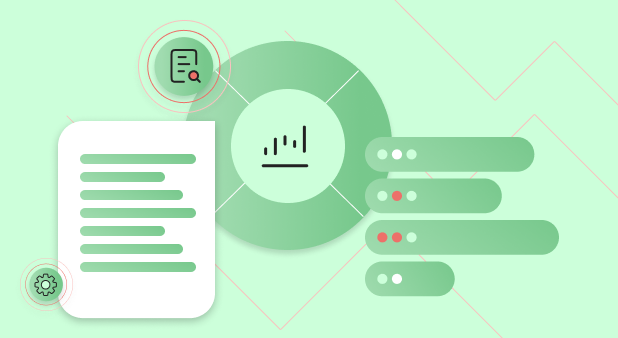
As we approach the end of 2024, experts are already looking ahead to what 2025 will have in store. AI, Data Security and Sustainability are paving the way, 2025 is going to be another year of technological transformation with AI and rapid deployment undoubtedly taking centre stage.
From Agentic AI, through to Sustainability, here are some of our predictions:
Trend One: Agentic AI – Autonomous Digital Workforces
AAs AI continues to be a part of our daily life, the need for ethical oversight continues to grow. Forrester has forecast that by 2030 spending on off-the-shelf AI governance software will more than quadruple, reaching $15.8 billion will capturing 7% of overall AI software spending.
In 2025 AI governance and platforms to support this are going to be a huge part of technical infrastructure. These platforms will ensure that AI systems are operating in a responsible and transparent way, helping manage bias, mitigating privacy violations and ensuring compliance with regulations.
By 2028, Gartner are forecasting that organisations who use AI governance frameworks will see up to 40% fewer AI-related ethical issues. For organisations this will translate into better customer trust and a stronger ability to navigate within complex regulations. AI governance ensures that systems are able to make decisions ethically without bias, in line with industry regulations.
Trend Two: AI Governance
As AI continues to be a part of our daily life, the need for ethical oversight continues to grow. Forrester has forecast that by 2030 spending on off-the-shelf AI governance software will more than quadruple, reaching $15.8 billion will capturing 7% of overall AI software spending.
In 2025 AI governance and platforms to support this are going to be a huge part of technical infrastructure. These platforms will ensure that AI systems are operating in a responsible and transparent way, helping manage bias, mitigating privacy violations and ensuring compliance with regulations.
By 2028, Gartner are forecasting that organisations who use AI governance frameworks will see up to 40% fewer AI-related ethical issues. For organisations this will translate into better customer trust and a stronger ability to navigate within complex regulations. AI governance ensures that systems are able to make decisions ethically without bias, in line with industry regulations.
Trend Three: Disinformation Security – battling fake news and data leaks
As AI tools are becoming more accessible, the risk of malicious use increases. This is where Disinformation Security comes in. By 2028, Gartner are predicting that 50% of enterprises will adopt security measures designed to combat the spread of fake news and data leaks. In a world where fake news is travelling faster than ever, this technology will be key to protect data integrity and ensures trustworthy information is at the forefront.
It isn’t going to be long until disinformation security technology will be as important as traditional cybersecurity systems, helping businesses limit the risks posed by AI-driven misinformation and data manipulation.
As AI continues to mature, these tools will play a critical role in maintaining the authenticity of digital information.
Trend Four: Industry-Specific AI Models:
AI agents are being used more widely, leading to a rise of industry specific AI models. These are specialist systems, tailored to meet the unique needs of different sectors. For example, within healthcare there are industry- specific AI models being used to improve diagnostics, patient care and streamline invoice processing within finance. By 2025, 25% of enterprises using generative AI will likely have AI agents in play, a number expected to double by 2027.
As industry specific AI models become more sophisticated organisations can look forward to tools that cater to their exact needs.
Trend Five: Energy-Efficient Computing
Sustainability is at the forefront of most, there has been a huge focus throughout 2024 and it is looking like this won’t change anytime soon. As businesses are facing increased pressure to recuse their carbon footprint, they are turning towards energy-efficient computing.
This trend focuses on developing hardware and software that consume less power while delivering greater performance. From renewable energy-powered data centres to energy-efficient algorithms, companies are finding new ways to cut energy consumption and lower the environmental impact.
Switching to energy-efficient systems will come with its challenges – including new hardware, skills and the need to migrate to more sustainable computing platforms – the long-term benefits are clear.
By 2025, more businesses will continue to adopt green energy solutions. Not only to help meet their sustainability goals but also to stay ahead of regulatory pressure.
Trend Six: Real-Time Decision-Making
The ability to make decisions in real time is more important than ever. Real-time decision making fuelled by AI will allow organisations to respond instantly to market changes, customer demands and operational shifts.
Powered by agentic AI and advanced systems, businesses will be able to make faster, data- driven decisions – improving agility.
In fast moving industries like e-commerce or logistics, this could lead to a better customer experience, optimised supply chains and faster problem resolution. AI is becoming a more integral part of decision-making, and this is only going to increase in the upcoming year.
Trend 7: A New Breed of RPA
Traditional Robotic Process Automation (RPA) vendors might be in for a shock market transformation courtesy of the LLM developers. With Anthropic making waves with the release of “Computer Use,” a groundbreaking feature that allows their AI model, Claude, to interact directly with a desktop environment, performing tasks like clicking, moving cursors, and navigating through applications.
Google has also joined the race with Project Jarvis, pushing the boundaries of what automation can achieve. This raises the question: should we even call this RPA anymore? The traditional model of RPA, which relies on scripted bots to automate repetitive tasks, is being overshadowed by the rise of API-driven automation through Integration Platform as a Service (iPaaS).
These platforms are increasingly hooking into large language models (LLMs) to provide scalable automation, making big RPA deployments feel redundant when we add capabilities like Computer Use and Claude. For companies on the verge of committing to a major RPA investment or investors weighing positions in RPA providers, this shift signals a need for caution. The emergence of AI models that can control workspaces directly puts conventional RPA vendors at risk of obsolescence, leaving them scrambling to adapt. As this landscape evolves, the skills needed to harness the power of these new AI-driven automation systems will likely shift towards expertise in AI model integration, workflow design, and the ability to leverage iPaaS for sophisticated, scalable automation.
Trend 8: Rapid Deployment Capabilities
Low-code/no-code (LCNC) platforms are changing how quickly businesses can deploy solutions, drastically shortening time-to-value. These tools allow business users to build and customise applications without deep technical expertise, reducing the reliance on systems integrators (SIs) for deployment. As LCNC solutions become more sophisticated, businesses can prototype, iterate, and scale solutions with minimal coding, driving cost savings and making digital transformation more accessible. The result? SIs will play a smaller role in deployment, and organisations will benefit from faster and more affordable solutions.
Looking Ahead to 2025
The technology space in 2025 is going to be defined by significant advancements across AI, Security, Sustainability and computing power potential. The rise of autonomous AI and the increasing importance of data privacy and governance shows that there will be a huge market shift over the coming years across all industries.
There will be challenges to overcome but the opportunities for businesses to streamline operations are vast.
Moving into the future it will be imperative for businesses to adopt these trends and utilising these technologies will be key for an organisation to ensure they remain competitive.







